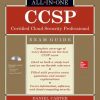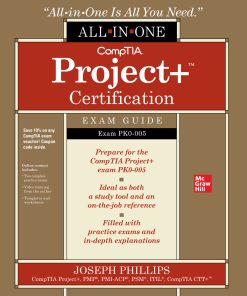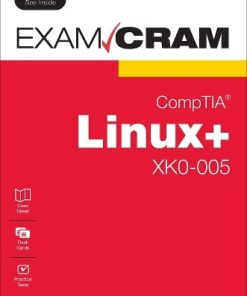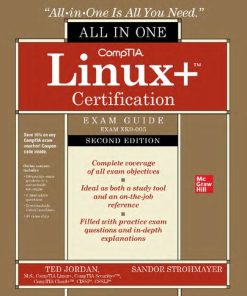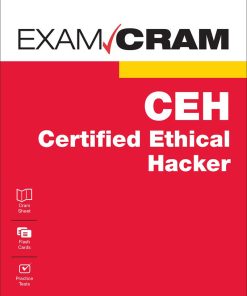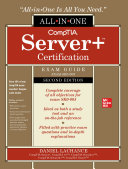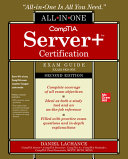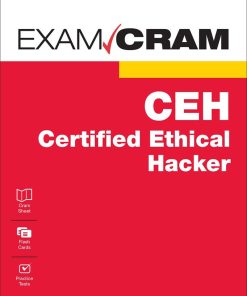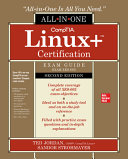CompTIA Linux+ XK0-005 Exam Cram 1st edition by William Rothwell 0137898495 9780137898497
$50.00 Original price was: $50.00.$25.00Current price is: $25.00.
CompTIA Linux+ XK0-005 Exam Cram 1st edition by William Rothwell – Ebook PDF Instant Download/DeliveryISBN: 0137898495, 9780137898497
Full download CompTIA Linux+ XK0-005 Exam Cram 1st edition after payment.
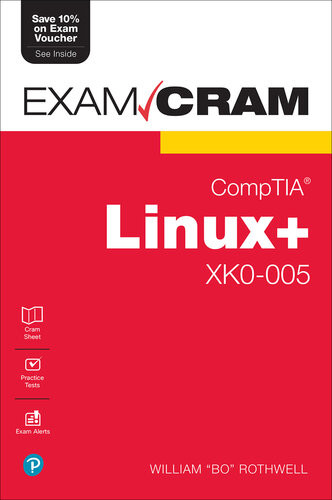
Product details:
ISBN-10 : 0137898495
ISBN-13 : 9780137898497
Author : William Rothwell
Prepare for CompTIA Linux+ XK0-005 exam success with this Exam Cram from Pearson IT Certification, a leader in IT certification. This is the eBook edition of the CompTIA Linux+ XK0-005 Exam Cram. This eBook does not include access to the Pearson Test Prep practice exams that comes with the print edition. CompTIA Linux+ XK0-005 Exam Cram is an all-inclusive study guide designed to help you pass the updated version of the CompTIA Linux+ exam. Prepare for test day success with complete coverage of exam objectives and topics, plus hundreds of realistic practice questions. Extensive prep tools include quizzes, Exam Alerts, and our essential last-minute review Cram Sheet. Covers the critical information needed to score higher on your Linux+ XK0-005 exam! Manage files and directories Configure and manage storage Manage software configurations Implement identity management Implement and configure firewalls Create simple shell scripts to automate common tasks Perform basic container operations Analyze and troubleshoot storage issues and network resource issues
CompTIA Linux+ XK0-005 Exam Cram 1st Table of contents:
Part I: System Management
Chapter 1. Linux Fundamentals
Filesystem Hierarchy Standard (FHS)
Basic Boot Process
Kernel Panic
Device Types in /dev
Basic Package Compilation from Source
Storage Concepts
Listing Hardware Information
Chapter 2. Manage Files and Directories
File Editing
File Compression, Archiving, and Backup
File Metadata
Soft and Hard Links
Copying Files Between Systems
File and Directory Operations
Chapter 3. Configure and Manage Storage Using the Appropriate Tools
Disk Partitioning
Mounting Local and Remote Devices
Filesystem Management
Monitoring Storage Space and Disk Usage
Creating and Modifying Volumes Using Logical Volume Manager (LVM)
Inspecting RAID Implementations
Storage Area Network (SAN)/Network-Attached Storage (NAS)
Storage Hardware
Chapter 4. Configure and Use the Appropriate Processes and Services
System Services
Scheduling Services
Process Management
Chapter 5. Use the Appropriate Networking Tools or Configuration Files
Interface Management
Name Resolution
Network Monitoring
Remote Networking Tools
Chapter 6. Build and Install Software
Package Management
Sandboxed Applications
System Updates
Part II: Security
Chapter 7. Manage Software Configurations
Updating Configuration Files
Configure Kernel Options
Configure Common System Services
Localization
Chapter 8. Security Best Practices in a Linux Environment
Managing Public Key Infrastructure (PKI) Certificates
Certificate Use Cases
Authentication
Linux Hardening
Chapter 9. Implement Identity Management
Account Creation and Deletion
Account Management
Chapter 10. Implement and Configure Firewalls
Firewall Use Cases
Common Firewall Technologies
Key Firewall Features
Chapter 11. Configure and Execute Remote Connectivity for System Management
SSH
Executing Commands as Another User
Chapter 12. Apply the Appropriate Access Controls
File Permissions
Security-Enhanced Linux (SELinux)
AppArmor
Command-Line Utilities
Part III: Scripting, Containers, and Automation
Chapter 13. Create Simple Shell Scripts to Automate Common Tasks
Shell Script Elements
Common Script Utilities
Environment Variables
Relative and Absolute Paths
Chapter 14. Perform Basic Container Operations
Container Management
Container Image Operations
Chapter 15. Perform Basic Version Control Using Git
Introduction to Version Control and Git
clone
push
pull
commit
add
branch/checkout
tag
gitignore
Chapter 16. Common Infrastructure as Code Technologies
File Formats
Utilities
Continuous Integration/Continuous Deployment (CI/CD)
Advanced Git Topics
Chapter 17. Container, Cloud, and Orchestration Concepts
Kubernetes Benefits and Application Use Cases
Single-Node, Multicontainer Use Cases
Container Persistent Storage
Container Networks
Service Mesh
Bootstrapping
Container Registries
Part IV: Troubleshooting
Chapter 18. Analyze and Troubleshoot Storage Issues
High Latency
Input/Output Operations per Second (IOPS) Scenarios
Capacity Issues
Filesystem Issues
I/O Scheduler
Device Issues
Mount Option Problems
Chapter 19. Analyze and Troubleshoot Network Resource Issues
Network Configuration Issues
Firewall Issues
Interface Errors
Bandwidth Limitations
Name Resolution Issues
Testing Remote Systems
Chapter 20. Analyze and Troubleshoot Central Processing Unit (CPU) and Memory Issues
Runaway Processes
Zombie Processes
High CPU Utilization
High Load Average
High Run Queues
CPU Times
CPU Process Priorities
Memory Exhaustion
Out of Memory (OOM)
Swapping
Hardware
Chapter 21. Analyze and Troubleshoot User Access and File Permissions
User Login Issues
User File Access Issues
Password Issues
Privilege Elevation
Quota Issues
Chapter 22. Use systemd to Diagnose and Resolve Common Problems with a Linux System
Unit Files
Common Problems
Index
Access Card
Where are the companion content files? – Register
Inside Front Cover
Inside Back Cover
People also search for CompTIA Linux+ XK0-005 Exam Cram 1st:
comptia linux+ certification
is comptia linux+ worth it
comptia linux+ objectives
comptia linux+ practice test
comptia linux+ exam cost
Tags: CompTIA Linux, Exam Cram, William Rothwell, Exam Cram
You may also like…
Computers - Applications & Software
Computers - Computer Science
Computers - Computer Certification & Training
CompTIA Linux+ Certification. Exam Guide 2 (Exam XK0-005) Edition Ted Jordan
Computers - Computer Certification & Training
Computers - Computer Certification & Training
Computers - Computer Certification & Training
CompTIA Linux+ Certification All-in-One Exam Guide (Exam XK0-005) 2nd Edition
Computers - Networking
CompTIA Network+ N10-008 Exam Cram 7th Edition Emmett Dulaney


